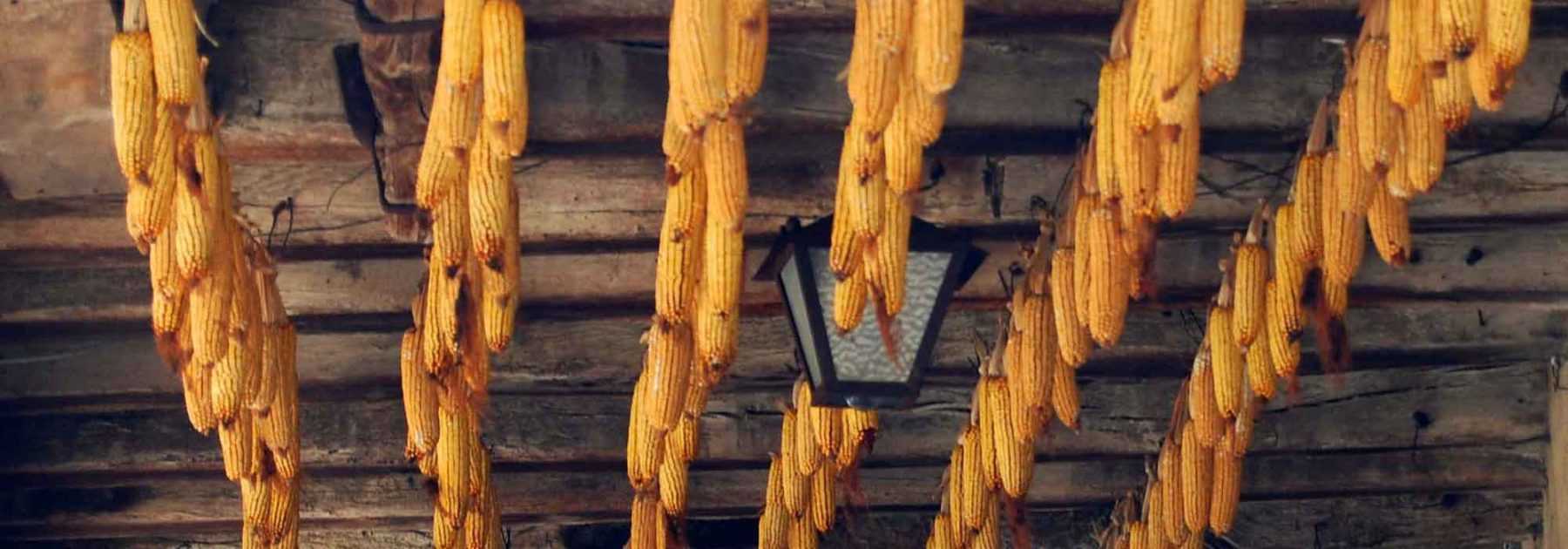
Sweetcorn Cultivation: Sowing, Planting, Harvesting
Contents
Sweetcorn in a nutshell
- Sweetcorn is an annual cereal, grown in the vegetable garden as a vegetable.
- It is cultivated in the garden, in full sun and in loose, rich and well-watered soil.
- It is planted in squares or in several rows to ensure pollination and the formation of well-filled cobs.
- Sweetcorn is harvested before the grains are fully mature, whereas popcorn maize (for popcorn) is harvested when fully ripe.
- The best way to enjoy it… fresh and on the cob!
Our expert's word
Sweetcorn, a cereal grown as a vegetable, is relatively uncommon in kitchen gardens. Nevertheless, its yellow, white or purple kernels are delicious. They are harvested before full maturity to ensure they remain tender, sweet and not starchy. Popcorn maize, on the other hand, is grown specifically for making popcorn. Its cob is harvested at full maturity.
In France, we have a very limited choice of varieties to cultivate. One traditional sweetcorn variety is ‘Golden Bantam’, renowned for its excellent flavour and ease of cultivation due to its early maturity. Mini cobs that can be eaten whole are now common – why not try growing ‘Snobaby’? And for your annual popcorn supply, consider cultivating this remarkable red-kernelled variety aptly named ‘Fraise’.
Sweetcorn and popcorn maize are mainly grown in south-western France, where growing conditions are more favourable. However, don’t hesitate to grow it anywhere in France – it adapts well to kitchen gardens and presents far fewer problems than in monocultural fields. In terms of preferences, loosened, fertile soil, sunshine and water are all it needs to thrive.
Sweetcorn is primarily sown directly in the ground once the soil is warm enough, in May. It can also be started under cover to speed up growth in cooler regions or simply to stagger summer harvests. Maintenance involves watering and earthing up to encourage even root development. Finally, it thrives when planted alongside squashes and beans.
Description and Botany
Botanical data
- Latin name Zea mays subsp. mays
- Family Poacées
- Common name Maïs
- Flowering Annuelle
- Height 2 à 5 ans
- Exposure Soleil
- Soil type riche, meuble, frais
- Hardiness 0°C
Maize, the sacred plant of the Aztecs, is a plant native to Central America. Its cradle is located in central or southern Mexico, where it was domesticated by humans from teosinte (Zea spp.) over 9,000 years ago. Its cultivation then spread on both sides of the equator. Maize was brought to Europe by Christopher Columbus upon his first return from America.
The common name Maize comes from Maiz, from the Taíno, an Amerindian ethnic group that inhabited the Greater Antilles when Europeans arrived in the 15th century. The genus name Zea was chosen by Linnaeus and refers to spelt in Latin.
There are numerous maize selections and crosses, among the most common are (non-exhaustive list):
- Sweet corn (Zea mays saccharata) grown for fresh consumption.
- Popcorn (Zea mays everta) grown for popcorn.
- Flint corn (Zea Mays indurata) grown by the semolina industry.
- Dent corn (Zea mays indentata) grown for animal feed (fattening) and for starch.
- Modern maize selections (flint x dent) are grown as grain corn (starch, biodegradable bags) and as forage corn (whole plant for animal feed).
Cultivated maize (Zea mays subsp. mays) is an annual herbaceous plant from the Poaceae family (grass). Of variable size, the stems range from 50 cm up to 4 metres tall depending on the variety. The stem is usually single but it is common for maize to produce secondary stems (suckers), in which case it is said to tiller. These stems bear large elongated leaves at each internode. The root system is shallow, consisting of numerous roots that appear at the base of the stem and descend up to 1 metre deep.
Maize is an anemophilous plant, meaning pollination occurs via wind, though bees may also be attracted to the pollen. The same plant bears both male and female flowers (it is monoecious). The male flowers, shaped like panicles, are grouped at the top of the stem and produce millions of pollen grains that fall onto the silks (female flower inflorescences) either directly by gravity or are carried by the wind. Pollen grains can travel up to 500 metres on average, making cross-pollination common. It takes 2 to 3 months from sowing to pollination and another 2 to 3 months from pollination to full grain maturity in the cob. Sweet corn is a special case as it is harvested about three weeks after pollination.
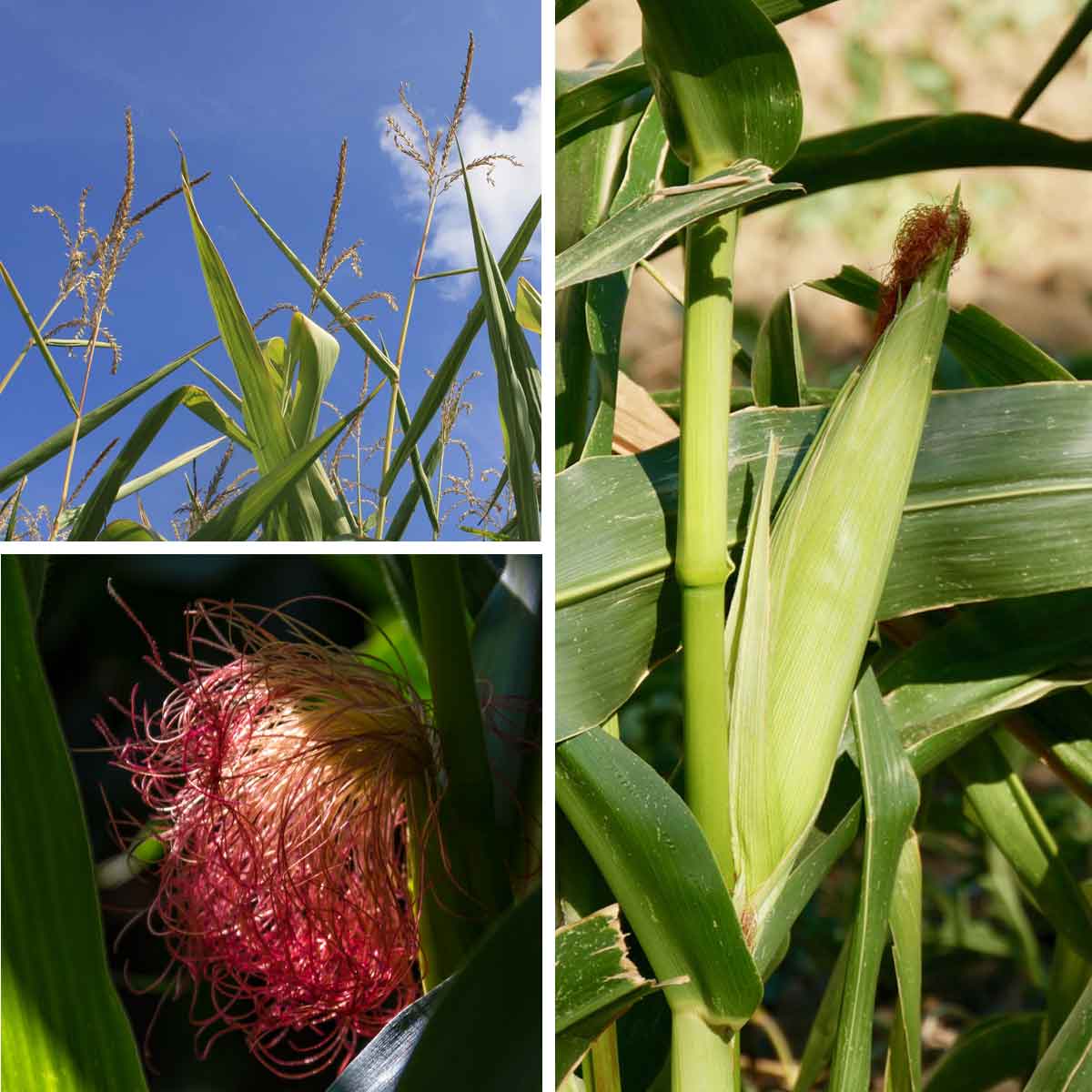
The male flowers at the top of the plant are laden with pollen; The silks of the female flower, each filament fertilised with pollen will produce a maize kernel; The formed cob
Sweetcorn Varieties
For amateur gardeners, there are relatively few varieties of maize available compared to the genetic diversity found across the Atlantic. For consumption, we mainly distinguish between sweetcorn varieties and popcorn varieties.

Sweet Corn Golden Bantam
- Flowering time July to October
- Height at maturity 2 m

Sweet Corn Miner - Ferme de Sainte Marthe Seeds
- Flowering time July to September
- Height at maturity 1,50 m
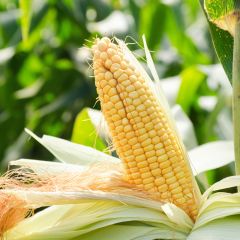
Sweet Corn Swift - Zea mays
- Flowering time July to October
- Height at maturity 2 m

Mini sweetcorn Snobaby - Zea mays
- Flowering time July to October
- Height at maturity 2 m

Corn Strawberry Popcorn - Ferme de Sainte Marthe Seeds
- Flowering time July to September
- Height at maturity 1 m

Corn Tom Thumb Popcorn - Ferme de Sainte Marthe Seeds
- Flowering time July to September
- Height at maturity 50 cm

Corn Amarillo - Ferme de Sainte Marthe Seeds
- Flowering time July to September
- Height at maturity 2 m

Organic Multicoloured Maize - Ferme de Sainte Marthe seeds seeds
- Flowering time July to September
- Height at maturity 2 m
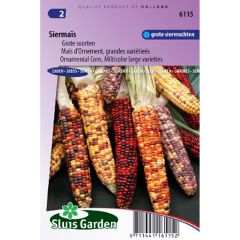
Zea mays japonica large varieties - seeds
- Flowering time July to November
- Height at maturity 2 m
Discover other Sweetcorn
View all →Available in 1 sizes
Available in 1 sizes
Available in 1 sizes
Available in 1 sizes
Available in 1 sizes
Available in 1 sizes
Available in 1 sizes
Available in 1 sizes
Available in 1 sizes
Sowing sweetcorn
Sweetcorn is sown in spring, between April and June. The seeds can be sown directly in the ground, in rows or in clusters of several seeds. The soil must be sufficiently warm (12°C). In colder regions, sowing can be done in pots indoors, using seed compost and a little compost. The strongest seedling from each pot can then be transplanted into the ground around May-June.
Sowing in rows
- Sow sweetcorn in full sun after soaking the seeds in lukewarm water for 12 hours.
- Stretch a line and dig furrows a few centimetres deep (3 to 5 cm), spacing the rows 70 cm apart.
- Sow one seed every 10 cm.
- Cover with fine soil and lightly firm with the back of a rake.
- After germination (around ten days), thin out to leave one seedling every 20 cm.
Sowing in pots
You can start sowing in pots indoors from March, then plant them out in May-June.
- Sow 2 to 3 seeds 3 cm deep per pot in seed compost.
- Water regularly until germination.
- Thin out to keep the strongest seedling per pot.
- Plant out in the garden from May onwards.
Association
The maize is the vertical pillar in the most famous of vegetable associations, the milpa, also known as the three sisters planting. We owe this association to Native Americans who cultivated maize alongside climbing beans and squash. These three plants provide mutual benefits: a nitrogen residue from the beans (after cultivation), the maize serves as a support for the beans, and the squash protects the soil with its large foliage, bringing more coolness, creating a microclimate, and competing with weeds.
To create the milpa in practice, first sow the maize in rows (at least 2 rows). When it reaches 10 cm in height, sow two climbing bean seeds on either side of each maize plant. A squash (or courgette) plant is sown—or preferably transplanted—every 1 or 2 metres (depending on the expected growth of the variety) on either side of the maize rows.
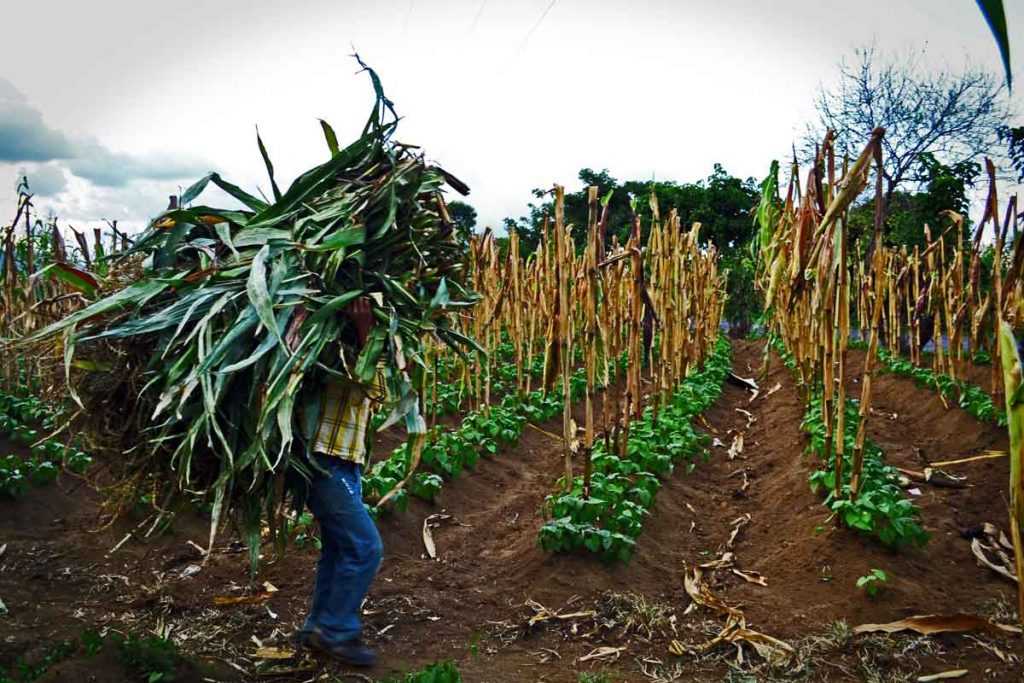
Still rooted in Central and South American culture, here is an association inspired by the milpa (legume + cereal): dwarf beans at the foot of maize.
Cultivation and care
Maize thrives in a sunny position and loose, fertile soil: Add manure or compost during soil preparation, for instance in the preceding autumn, to enrich the plot intended for sowing. Crop rotation between two maize crops should be around 4 years.
However, it’s important to plant several rows of maize or grow them in a block to encourage good pollination. Indeed, pollen from the male flowers (at the top of the stem) will fall onto the female flowers, located lower down the stem. This fertilisation can occur naturally with the wind or manually by shaking the plants.
When the maize reaches about 30 cm in height, earth up to 10 cm high to promote better anchorage. Water regularly if there’s no rain (once a week) but avoid watering the male flowers during pollination. Mulch the soil to retain moisture (grass clippings, straw…).
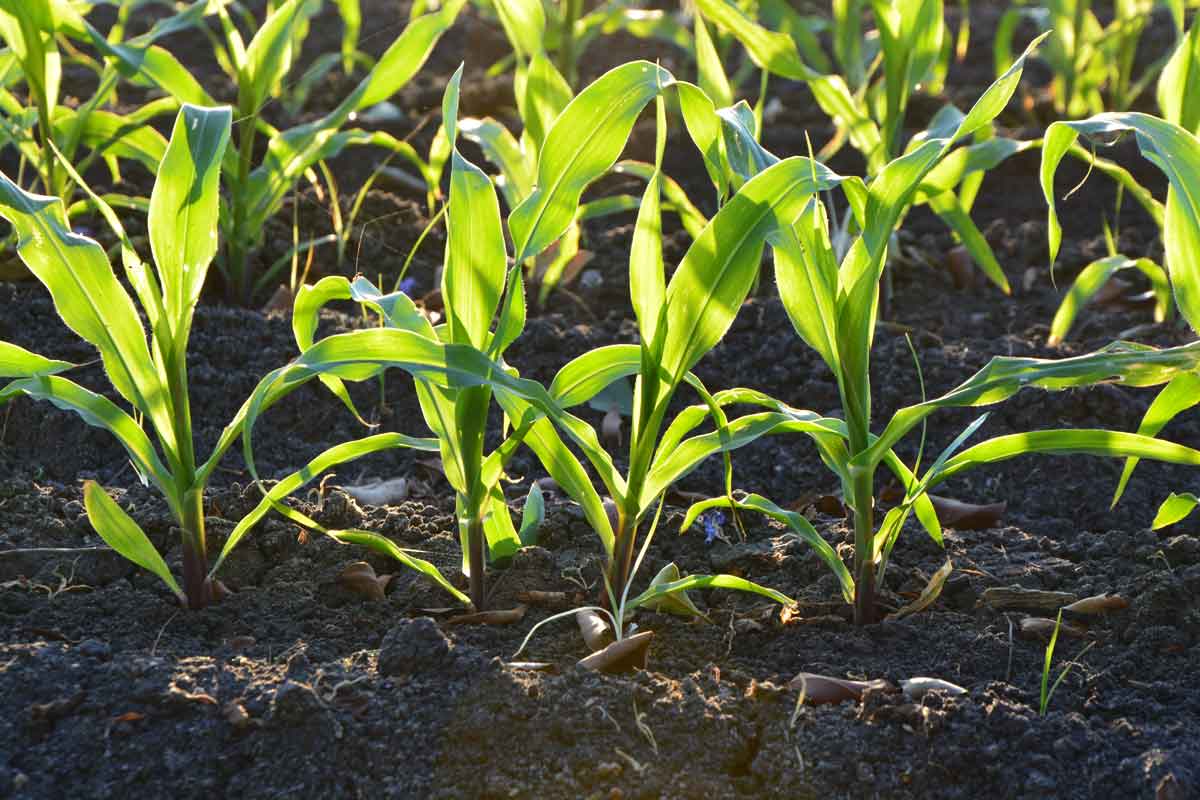
The ideal stage for earthing up young maize plants
Diseases and Pests
The European Corn Borer
The caterpillar of the corn borer, a destructive maize moth, burrows into young corn cobs and sometimes into the heart of stems, causing them to break. As a preventive measure, shred crop residues before using them (composting or mulching). Practise good crop rotation by not growing maize on the same plot for at least 4 years. In case of severe infestation, you can spray a solution of Bacillus thuringiensis, but this solution is not 100% reliable. Indeed, the caterpillars are protected by the husk surrounding the cob.
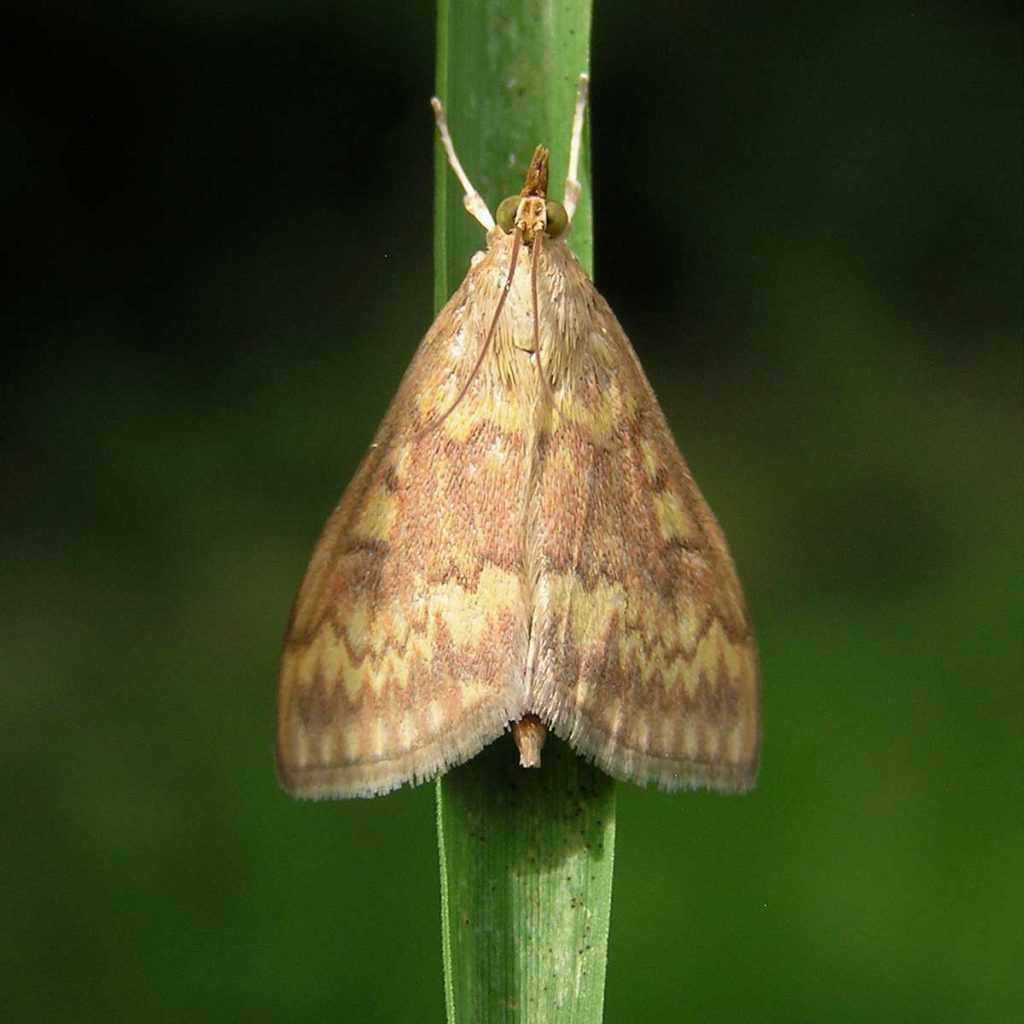
The European corn borer at adult stage, though it’s the caterpillar that damages the maize
Harvesting and storing
Sweetcorn is typically harvested around 80 days after sowing, depending on heat and watering, when the silks begin to turn brown – about three weeks after pollination on average. The kernels should be well-developed but still tender. To check if they’re ripe, sample a few kernels from a cob and taste them. You can also squeeze them between your fingers; they should exude a slightly milky liquid. If harvested too late, the sugars convert to starch and the skin becomes tough.
To store sweetcorn after harvesting, remove the green husk surrounding the cob and consume promptly. For longer preservation, cook the cobs before storing them in jars or freezing.
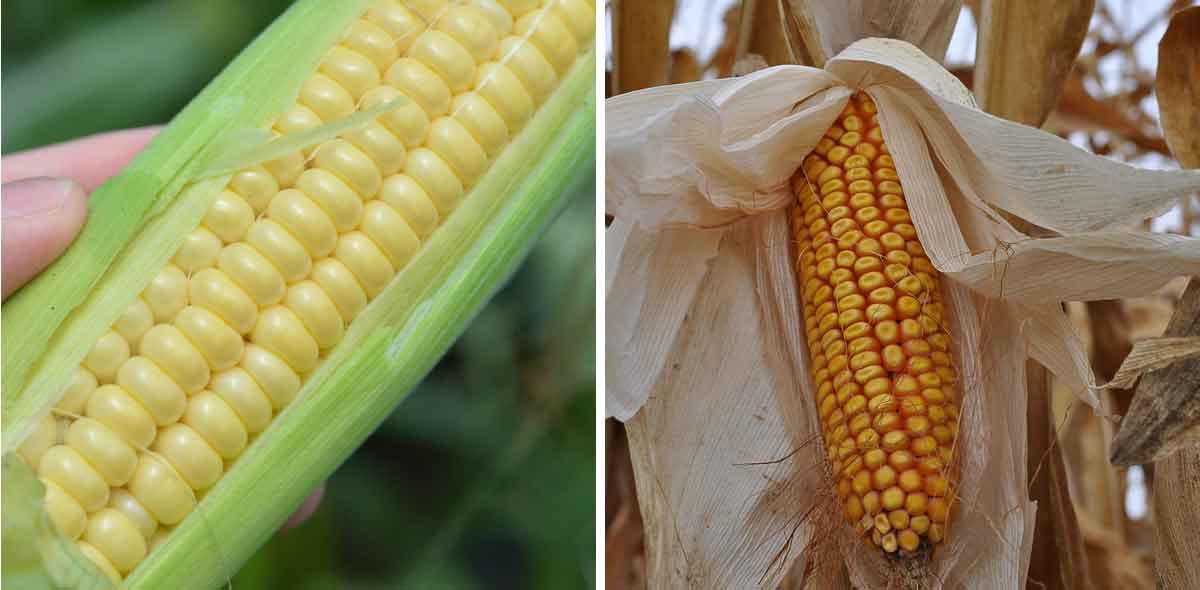
1) Ideal harvesting stage for sweetcorn – kernels are tender and milky inside, not fully mature 2) Ideal harvesting stage for popcorn – kernels are hard and fully mature
Culinary uses and nutritional benefits
Sweetcorn is the fifth most consumed vegetable (or more accurately, cereal) in France. While tinned sweetcorn is the most well-known and common variety, corn on the cob is far less familiar, except among gardeners.
Fresh from the vegetable patch, sweetcorn on the cob is delicious eaten raw or just blanched for a few seconds in boiling water. For even more flavour, they can be grilled for a few minutes on the barbecue – cook them in their husks for extra taste!
We owe thanks to the Native Americans who cultivated this cereal with its many health benefits! Sweetcorn is rich in carbohydrates but has a low glycaemic index, which limits the conversion and storage of carbs as fat. It’s high in magnesium and fibre, and its vibrant yellow colour reflects its richness in carotenes and antioxidants. It contains protein but is gluten-free. Finally, it’s packed with B vitamins, which support brain function, help prevent cardiovascular disease, combat low mood and guard against osteoporosis.
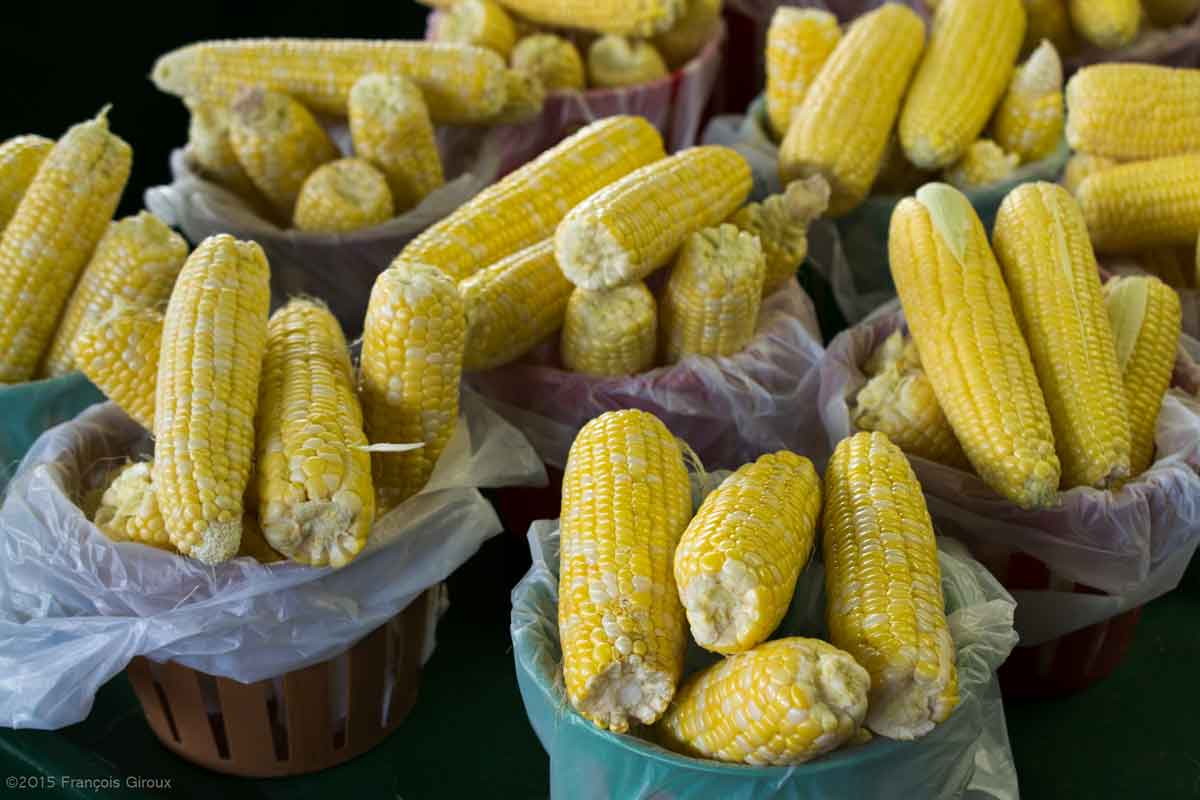
Saving Your Own Seeds
Only sow one variety at a time, or two varieties with staggered flowering periods: corn hybridises very easily and you would not harvest the variety you sowed. If your garden is located less than 400m from a cornfield, the risk of hybridisation is high. This distance should be increased if your garden is in a windy area. However, note that natural hedges are relatively effective at protecting your varieties from unwanted cross-pollination.
It is recommended to encourage pollination by shaking the male flowers with a stick to make the pollen fall onto the silks of the female flowers. During flowering, the plant must not lack water to ensure proper fertilisation.
Unlike harvesting for consumption, allow sweet corn ears to fully mature for seed production. For sowing in May, harvesting mature ears usually takes place in September or October.
Leave the ears to dry and wait until they are thoroughly dry before separating the kernels from the cobs.
Useful resources
- Discover our range of sweetcorn and popcorn varieties: multiple types to sow.
- Check out our advice sheet on 10 corn varieties to grow in your vegetable garden.
Frequently asked questions
-
Why do my corn cobs have very few kernels?
Poorly filled corn cobs are often due to inadequate pollination. To minimise this issue, here are our recommendations: Grow corn in several adjacent rows or in a square formation to allow pollen to better fertilise the silks of the female flowers. Encourage pollination by gently tapping the male flowers located at the top of the plants. Avoid overhead watering of the male flowers during pollination.
-
Should you remove side shoots?
There is no need to remove the side shoots of maize plants, as they allow the plants to generate more photosynthesis and thus provide greater vigour for ear formation.
- Subscribe!
- Contents


































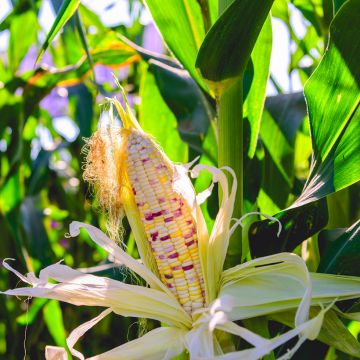
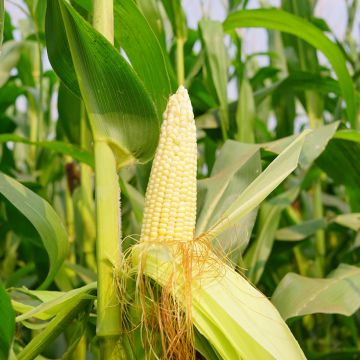
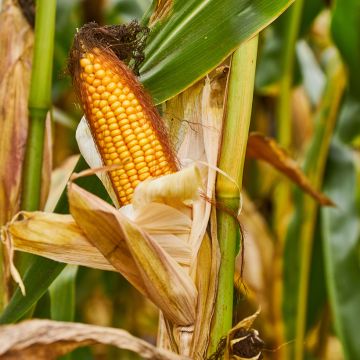
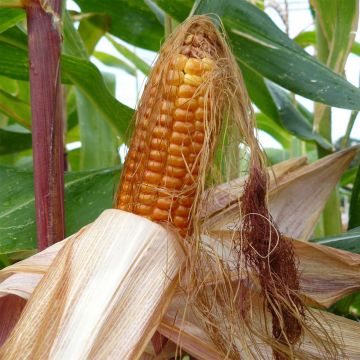

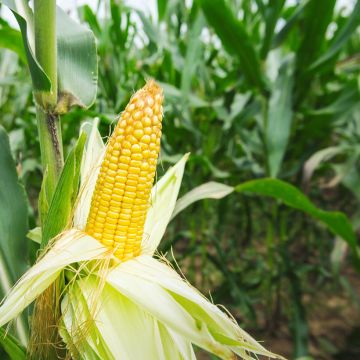


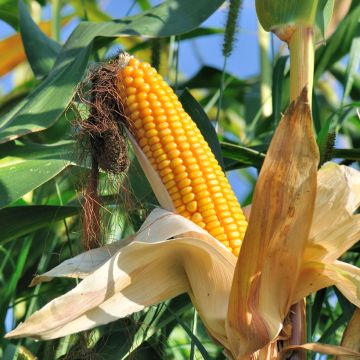
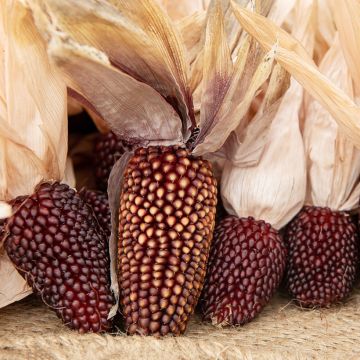
Comments